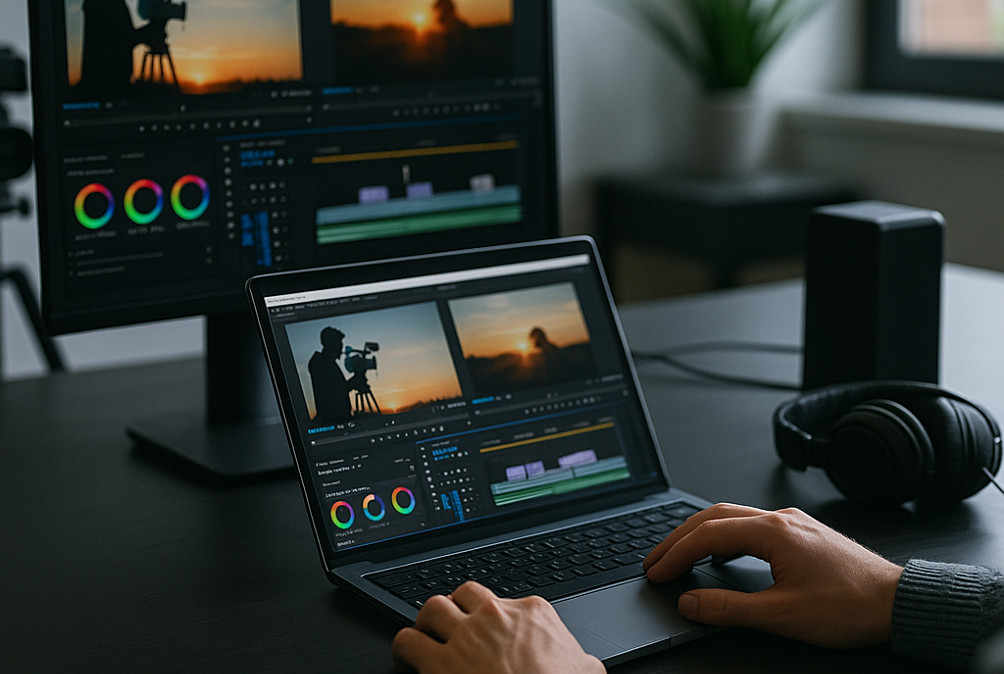Reviews
Balancing Speed and Accuracy In Video Production

Speed wins attention. Accuracy keeps trust. In high-pressure cycles—breaking news, product launches, crisis updates—you must deliver both. Rushing creates mistakes. Over-polishing risks missing the moment. The solution is not heroics but process: clear pre-production planning, lightweight safeguards, and tools that remove delays without skipping verification.
This article gives you a practical framework. You’ll learn how to set rules before filming that prevent confusion, capture clean footage and audio on the first try, fact-check under time pressure, and publish with built-in safeguards. It’s the same disciplined approach used by teams that manage to see projects from Florida to final delivery without sacrificing quality.
What you gain:
- A repeatable checklist that reduces retakes and rewrites.
- Field strategies for sharp visuals and clean sound.
- A rapid, reliable fact-checking process.
- A release workflow that catches mistakes before they reach the public.
Follow these steps to save hours without cutting corners. When deadlines close in, your team will move faster—and still deliver with confidence.
Pre-Production Rules That Prevent Rework
Fast, accurate video production starts before you roll the camera. Clear rules at this stage reduce wasted shots, missing elements, and late-stage corrections.
1. Lock the brief early
Write a one-page brief with purpose, target audience, key message, and distribution plan. This prevents mid-shoot changes that burn time and cause inconsistencies. If the goal is to cover a breaking press conference, include exact start times, expected speaker list, and required cut-downs for social.
2. Define roles and responsibilities
Assign a primary shooter, an audio lead, and a fact-checker. Even in small crews, splitting tasks prevents oversight. If you have a single-person crew, use checklists for each role so nothing is skipped.
3. Build a shot list
List required visuals in order of importance. Mark any that require specific angles or framing. For example, if you need a close-up of a product label for compliance, note it explicitly to avoid re-shoots.
4. Pre-verify facts and names
Before filming interviews, confirm the spelling of names, job titles, and any numerical data that will appear in lower thirds or graphics. Correcting these after publishing damages credibility and wastes editing time.
5. Prepare equipment for speed
Pack light but complete: charged batteries, formatted memory cards, backup mics. Test gear before leaving the studio. In breaking situations, one missing cable can delay the release beyond the story’s peak relevance.
These pre-production rules mean you start filming with precision. When pressure is high, there’s no guesswork—just execution.
Capturing Footage Without Sacrificing Quality
In fast-paced production, the goal is to shoot clean, usable footage the first time. Every extra take costs minutes you may not have.
1. Prioritise framing over perfection
A steady, well-framed shot beats a technically perfect but poorly composed one. Use a tripod or shoulder rig when possible. For handheld work, keep elbows close to your body to reduce shake.
2. Capture safe shots first
If the scene is fleeting—like a protest march or a live event—get a wide establishing shot immediately. Then work in closer for detail shots. This guarantees you have at least one complete visual if the action ends early.
3. Monitor audio in real time
Good audio is harder to fix than bad lighting. Wear headphones and watch levels while recording. If you can’t get a second take, poor sound may make the footage unusable.
4. Record more than you think you need
Hold shots for at least 10 seconds, even if the action seems static. Editors need extra frames for smooth transitions. Cutting too close to the action limits flexibility later.
5. Fact-check during interviews
If a source mentions dates, figures, or names, confirm on camera or off-mic immediately. This avoids having to re-contact them later when the deadline is hours away.
Fast doesn’t have to mean sloppy. A disciplined shooting process allows you to work at speed while keeping accuracy intact.
Editing for Speed Without Losing Accuracy
Fast turnaround editing is about workflow discipline, not rushing through the timeline. Every second saved in process can be re-invested in quality checks.
1. Organise before cutting
Import footage into clearly labelled bins by scene, subject, or camera. Rename files so you can find them instantly. Disorganisation is the main enemy of speed in post-production.
2. Use a rough cut first
Lay down the core story in sequence before worrying about transitions, effects, or colour correction. A rough cut lets you see the structure and spot missing pieces early.
3. Build a library of templates
Lower thirds, intro animations, and audio beds can be pre-set for fast insertion. This reduces repetitive work and keeps branding consistent across videos.
4. Double-check facts during edit
If numbers, locations, or names appear on-screen or in captions, verify them against trusted sources before final export. Once the video is live, errors damage credibility and require rework.
5. Automate where possible
Use editing software’s batch tools for colour grading, audio levelling, and caption generation. Automation frees up mental bandwidth for reviewing content accuracy.
6. Leave time for a fresh-eye review
Even on tight deadlines, step away for at least five minutes before the final watch-through. Small breaks improve your ability to catch continuity errors, typos, and factual mistakes.
By treating speed as an output of process efficiency, you deliver on time without sacrificing accuracy or viewer trust.
Publishing Quickly While Maintaining Credibility
Publishing fast does not mean skipping safeguards. In video production, credibility hinges on what you release and how you frame it.
1. Verify before upload
Check that every fact, quote, and visual is accurate. If you sourced footage from freelancers or third parties, confirm authenticity before publishing. A quick call or email can prevent legal and reputational fallout.
2. Pair speed with version control
Save clear, dated versions of your edits. If you must update a video after release, you can revert or cross-reference with the original file to maintain transparency.
3. Use precise headlines and descriptions
Titles and metadata set viewer expectations. Avoid clickbait. Instead, summarise exactly what the video covers. Misleading framing may get clicks but erodes long-term trust.
4. Publish in the right channels at the right time
A breaking news clip may go straight to social media, while a deep-dive should first appear on the main site. Matching the distribution method to the story type balances immediacy with context.
5. Monitor and respond
Once live, watch for viewer comments or corrections. Address factual errors promptly. A fast, transparent fix shows the audience that accuracy matters as much as speed.
6. Keep a post-publish checklist
Include steps like “verify subtitles,” “check thumbnail clarity,” and “test mobile playback.” A five-minute check can save hours of damage control.
Speed in publishing is only valuable when it’s matched by accountability. The audience will forgive a short delay more readily than they will forgive an avoidable error.
Striking the Right Balance
In video production, speed captures attention, but accuracy builds trust. Audiences expect timely updates, yet they remember the producers who get the details right. The most effective teams — like those at lv prod —excel at mastering both.
This balance comes from three core habits:
- Designing workflows that anticipate and remove bottlenecks.
- Embedding fact-checking at every stage of production.
- Training crews to adapt quickly without lowering quality standards.
Technology supports these habits. Automated transcription tools, shared cloud-based editing systems, and real-time collaboration platforms can dramatically cut turnaround times. Still, these tools are only as strong as the professionals operating them.
The takeaway is straightforward: treat accuracy as the foundation and speed as the amplifier. A rushed but wrong video erodes credibility instantly. A precise, well-crafted video—released fast enough to matter—earns loyalty and respect over time.
When every second counts, ensure your next upload is both trustworthy and timely. That balance will shape your reputation far more than flashy effects or click-worthy headlines ever could.

-

 World1 week ago
World1 week agoEthiopian volcano erupts for first time in thousands of years
-

 Health1 day ago
Health1 day ago8 kittens die of H5N1 bird flu in the Netherlands
-

 Legal6 days ago
Legal6 days agoUtah Amber Alert: Jessika Francisco abducted by sex offender in Ogden
-

 US News5 days ago
US News5 days agoExplosion destroys home in Oakland, Maine; at least 1 injured
-

 Health6 days ago
Health6 days agoMexico’s September human bird flu case confirmed as H5N2
-

 Legal2 days ago
Legal2 days ago15 people shot, 4 killed, at birthday party in Stockton, California
-

 World6 days ago
World6 days agoWoman killed, man seriously injured in shark attack on Australia’s NSW coast
-

 Health5 days ago
Health5 days agoMarburg outbreak in Ethiopia rises to 12 cases and 8 deaths




